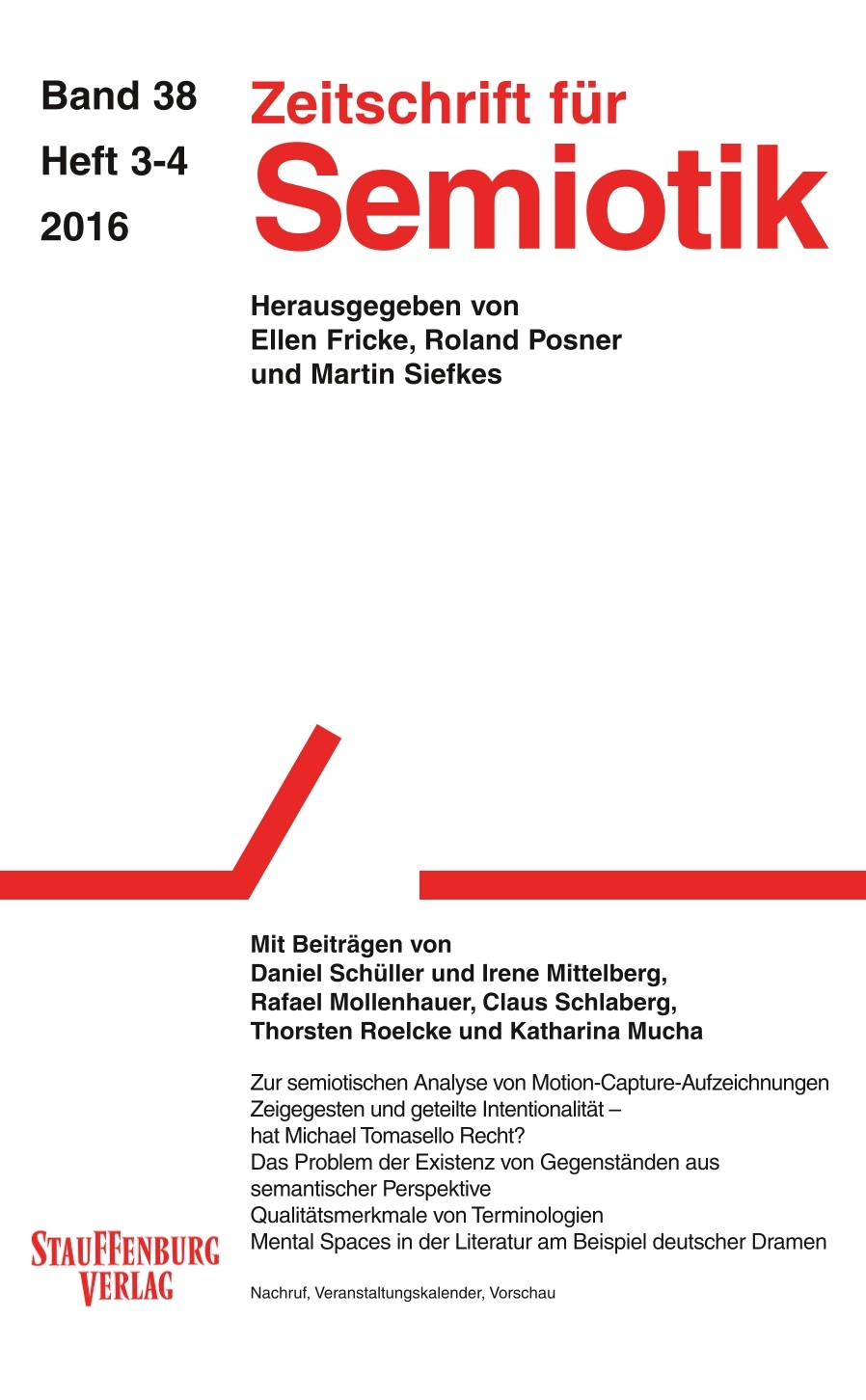Von subhumaner zu humanspezifischer Interaktion. Tomasello und die Qualität des Zeigens
DOI:
https://doi.org/10.14464/zsem.v38i3-4.636Keywords:
pointing gestures, deictis gestures, gesture research, interaction between animals, social practice, ontogenesis, language acquisition, language evolution, primate research, Karl Bühler, Michael TomaselloAbstract
Summary. Michael Tomasello, whose research is increasingly recognized in socio-theoretical discourses, describes deictic gestures as the crucial milestone on the way from animal interaction to specific human forms of interaction. On a mentalistic principle, he does not shy away from comparing the pointing gesture to language and from defining the deictic gesture as ontogenetic and phylogenetic earliest form of specific human cooperative communication. This article initially shows that the expression-theoretical construction of the research program creates contradictions and circularities. With reference to Karl Bühler’s works, a semiotic analysis of Tomasello’s examples of the special quality of pointing gestures is provided. This approach also casts a new light on Tomasello’s explanation of the transition to verbal language and argues that Tomasello’s theoretical construction hardly yields reliable statements according to social interaction as a process and to the emergence of cognitive capacities and communication means, but that his findings on the actual cognitive capacities of children and nonhuman primates could additionally be taken into account to unlock the secret of the origins of language.
Downloads
Published
Issue
Section
License
Copyright (c) 2023 Rafael Mollenhauer

This work is licensed under a Creative Commons Attribution 4.0 International License.
Copyright for articles published in this journal is retained by the authors. The content is published under a Creative Commons Licence Attribution 4.0 International (CC BY 4.0). This permits use, distribution, and reproduction in any medium, provided the original work is properly cited, and is otherwise in compliance with the licence.


